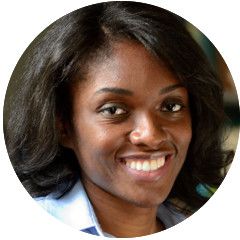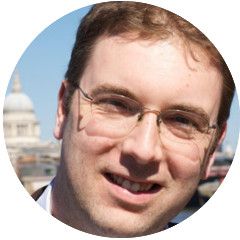Keynote speakers
Prof. Michael Bronstein 
Imperial College London
Deep learning on graphs and manifolds: going beyond Euclidean data
In the past decade, deep learning methods have achieved unprecedented performance on a broad range of problems in various fields from computer vision to speech recognition. So far research has mainly focused on developing deep learning methods for Euclidean-structured data. However, many important applications have to deal with non-Euclidean structured data, such as graphs and manifolds. Such data are becoming increasingly important in computer graphics and 3D vision, sensor networks, drug design, biomedicine, high energy physics, recommendation systems, and social media analysis. The adoption of deep learning in these fields has been lagging behind until recently, primarily since the non-Euclidean nature of objects dealt with makes the very definition of basic operations used in deep networks rather elusive. In this talk, I will introduce the emerging field of geometric deep learning on graphs and manifolds, overview existing solutions and outline the key difficulties and future research directions. As examples of applications, I will show problems from the domains of computer vision, graphics, medical imaging, and protein science.
Prof. Muyinatu Lediju Bell 
Johns Hopkins University
Ultrasound Image Formation in the Deep Learning Age
The success of many diagnostic and interventional procedures is deeply rooted in the ability of modern medical imaging systems to deliver clear and interpretable information. In ultrasound and photoacoustic imaging, the beamforming process is typically the first line of software defense against poor quality images. Yet, with today’s state-of-the-art beamformers, ultrasound and photoacoustic images remain challenged by channel noise, reflection artifacts, and acoustic clutter, which combine to complicate segmentation tasks and confuse overall image interpretation. In this talk, I will introduce the PULSE Lab’s novel alternative to beamforming, which improves ultrasound and photoacoustic image quality by learning from the physics of sound propagation in tissue.
We take raw data received by our ultrasound and photoacoustic imaging systems and bypass traditional beamforming and image formations steps, which are based on flawed assumptions in the presence of significant inter- and intrapatient variations. Instead, we replace these steps with a well trained deep neural network that only displays segmented structures of interest. Our pioneering image formation methods hold promise for robotic tracking tasks, visualization and visual servoing of surgical tool tips, and assessment of relative distances between the surgical tool and nearby critical structures (e.g., major blood vessels and nerves that if injured will cause severe complications, paralysis, or patient death). Impacted surgeries and procedures include cardiac catheterization, neurosurgery, spinal fusion surgery, hysterectomies, and biopsies.
Dr. Pearse Keane 
Moorfields Eye Hospital
Deep Learning in Ophthalmology – Reinventing the Eye Exam!
Ophthalmology is among the most technology-driven of the all the medical specialties, with treatments utilizing high-spec medical lasers and advanced microsurgical techniques, and diagnostics involving ultra-high resolution imaging. Ophthalmology is also at the forefront of many trailblazing research areas in healthcare, such as stem cell therapy, gene therapy, and – most recently – artificial intelligence. In July 2016, Moorfields Eye Hospital announced a formal collaboration with DeepMind to apply deep learning to optical coherence tomography (OCT) images for the diagnosis of retinal diseases such as age-related macular degeneration (AMD) and diabetic retinopathy (DR). In my presentation, I will describe the motivation – and urgent need – to apply deep learning to ophthalmology, the processes required to establish a research collaboration between the NHS and a company like DeepMind, the initial results of our research, and finally, why I believe that ophthalmology could be first branch of medicine to be fundamentally reinvented through the application of artificial intelligence.